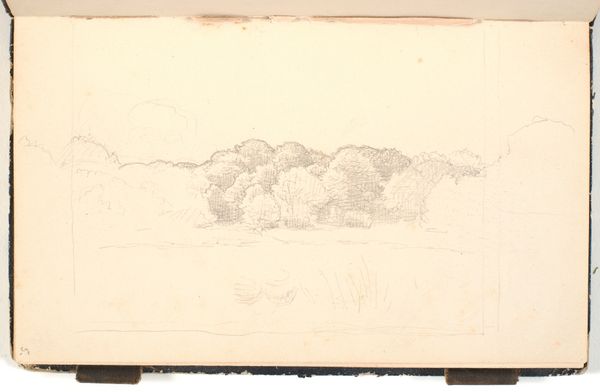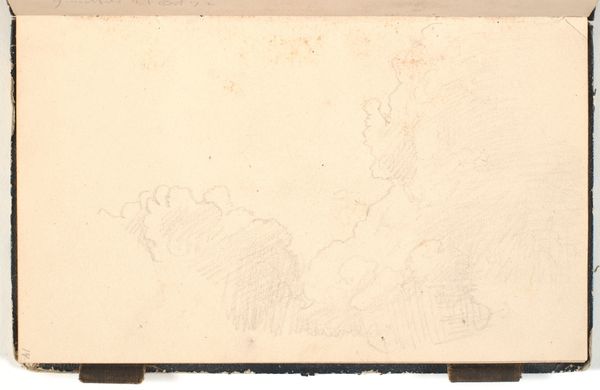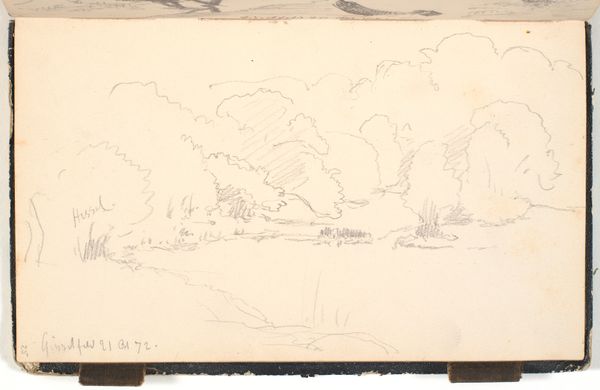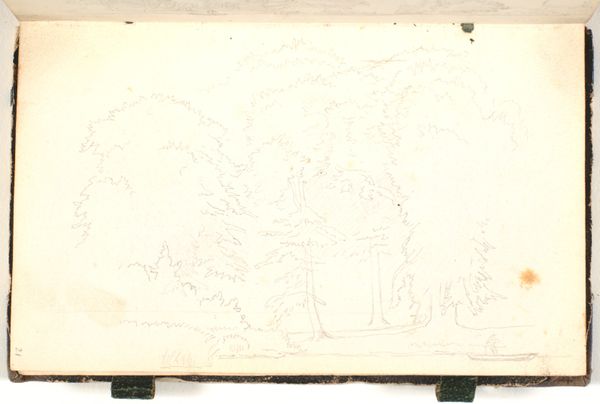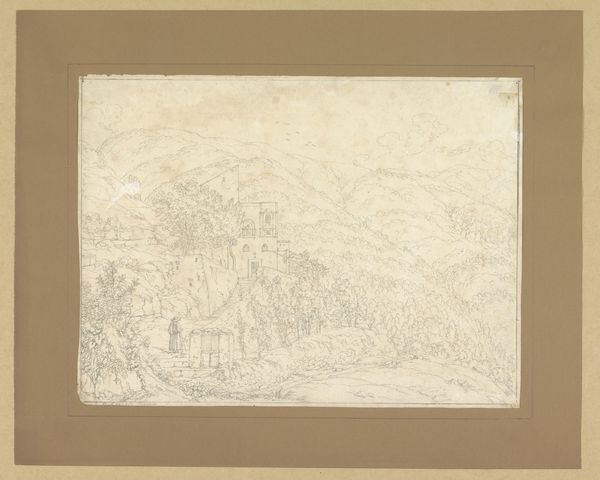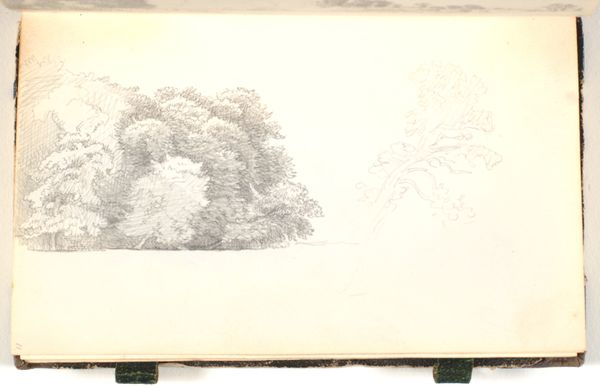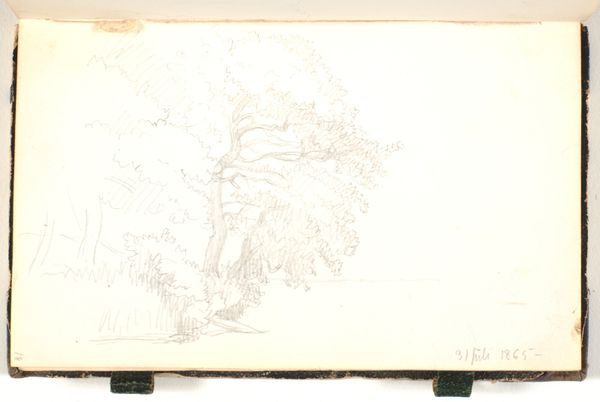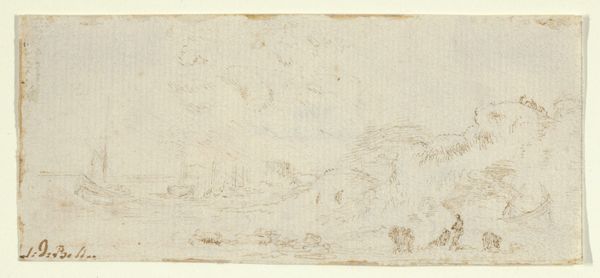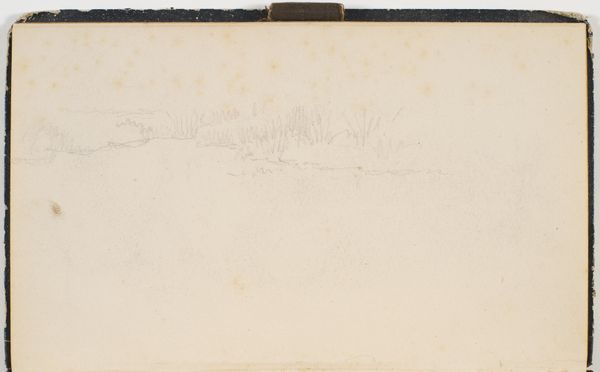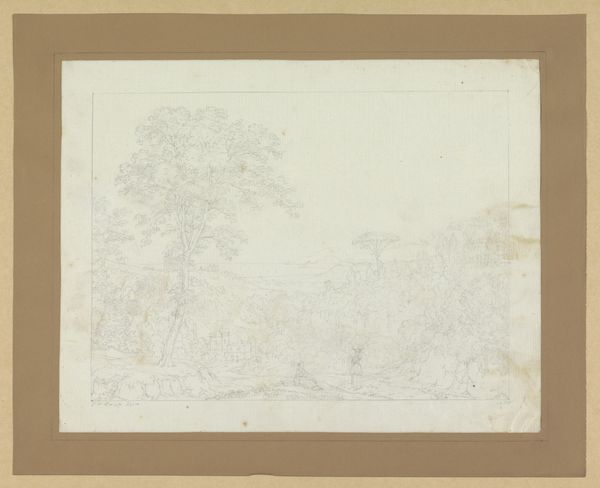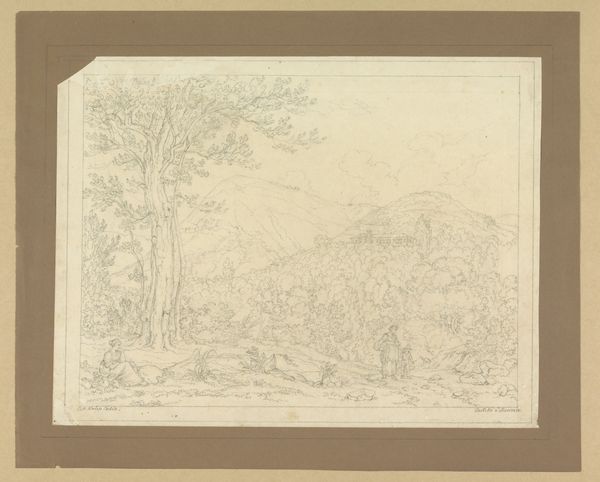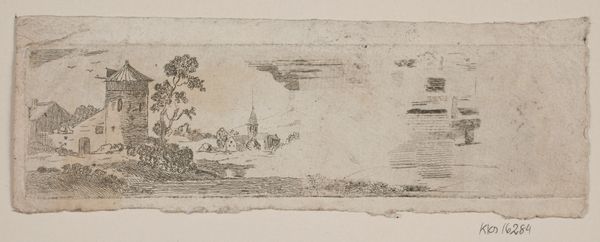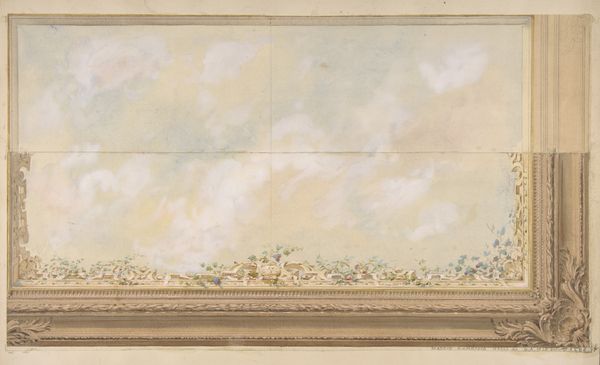
Dimensions: 215 mm (height) x 130 mm (width) (bladmaal)
Editor: This drawing, titled "Søbred med tæt træbevoksning," or "Lakeshore with dense tree vegetation", was created by P.C. Skovgaard in 1872 using pencil. There’s something incredibly serene about the landscape; the details in the trees almost seem to disappear into the sky. What do you see in this piece? Curator: This seemingly simple landscape drawing speaks volumes about the cultural moment in which it was created. In 1872, Denmark was grappling with the aftermath of the Second Schleswig War. Artists turned inwards, seeking solace and national identity in the idealized depiction of the Danish landscape. The very act of meticulously recording the "dense tree vegetation" becomes a powerful statement, reclaiming a sense of ownership and beauty in the face of loss. Notice how Skovgaard prioritizes the trees—almost obscuring the lake itself—emphasizing nature's resilience. Do you think this resonates with ideas about national identity and trauma at the time? Editor: I hadn’t thought about it in that way, but it makes sense. So the seemingly tranquil scene has a lot of emotional and political undertones related to its historical context? Curator: Precisely! It's crucial to understand the historical context when we're looking at art of this period. While seemingly apolitical on the surface, landscape art in 19th-century Denmark frequently became a vehicle for conveying nuanced ideas about nationalism, cultural identity, and even veiled political commentary through seemingly benign natural scenes. The location itself also could reference ownership and loss of land. Editor: That gives me a lot to think about, a deceptively simple landscape that opens into such a rich, historically charged view. Curator: Exactly. By recognizing art's engagement with the public and the politics surrounding its creation, we can see this drawing and others like it, as more than just pleasant renderings of nature. They become artifacts deeply embedded in the social fabric of their time.
Comments
No comments
Be the first to comment and join the conversation on the ultimate creative platform.
